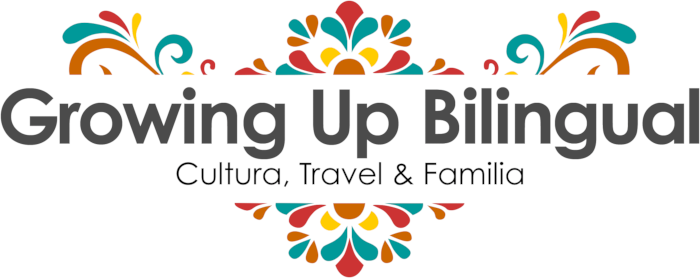This post is also available in: Español
Don’t miss Benefits And Challenges in Second Language Acquisition: Part 1. You can read it HERE.

“When there is a will there is a way” this is my motto in everything I do. I honestly had my deepest moment when my daughter was 5 years old, but my family in Spain asked me to hang in there, that I had worked too hard to quit; they were right, I had struggle for five years already to keep my daughter talking in Spanish, and so to quit now should not even be an option. After all, my daughter understood Spanish perfectly. I made a conscientious goal to be there for my daughter, to correct her Spanish when necessary, to read and write with her, and to make her speak in Spanish, no matter what, and no matter how tired or exhausted I was of asking her to, please, speak to me in Spanish. There were many times when I would say: what are you saying? She would repeat the sentence in English several times till she finally got the message that I wanted her to say it in Spanish. Many parents that both speak Spanish, however, do not teach their children Spanish, because they claim that it is too much work. I agree with them, however, the satisfaction is limitless, and at the end of the day all headaches, frustrations and tears will be part of the past, and the present will be one of satisfaction; and the feeling of having done what is our duty and responsibility towards our children: give them opportunities to learn. Imagine you plant tomato seeds in your yard. Sure, you are looking forward to eating a fresh, juicy tomato, and probably you can’t wait to that moment; you are tired of buying tasteless tomatoes. However, I am sure you also enjoy watering those seeds; you get a smile when you see the first leaves, and thrilled to pick the first tomato. Teaching a second language to your children is very similar, but with growing pains: they have a mind of their own, as we know, and arguments in this matter are expected.

For those parents that neither of them speaks Spanish, my recommendation is to start exposure to the target language as soon as possible to avoid even bigger frustrations by the time the child reaches elementary school. When children feel that what they are learning is a chore, they refuse to do it, so playing while learning is a huge part of my Spanish classes, to the point that children cry when the class is over: that breaks my heart. It is good for them to know that people in the world speak different languages, how fun it is to learn other cultures: the more we know about others, the more understanding and respectful we are. Children today have limitless learning resources: books, television, movies which format comes in different languages, internet, Skype; meet up groups of parents with children that want to be bilingual…the sky is the limit. Set a weekly calendar of activities, follow it. I have seen many people in California that both mom and dad do not speak Spanish at all, and they opt for hiring a Spanish speaking nanny. While this is a good source, it is important to hire someone who speaks proper Spanish. For instance, one of my students spoke fluent Spanish, but for the word dog ‘perro’ she said: guau guau. This is like saying in English: woof woof, instead of dog.
Parents, I encourage you all to set a goal and make it happen no matter what. Try to find the resources your children feel comfortable with, what makes them smile, laugh, be interested. This was a reason for me to publish my first book, I wanted to be like a curriculum, a process, where children could be engaged in learning from the beginning of the book till the end of it, by memorizing vocabulary and sentences through games, shopping and cooking. Also, Internet is a window to the world, and you can get information, material, stories, songs…from just any country: the world is a click away! It is easier than ever to learn a second language without leaving the comfort of your home, so go for it!! Have in mind that it takes a lot of time to speak a second language, it does not happen overnight, but as you approach your goal, your children will always be interested in learning more and more, and at the end of the race, when you cross the finish line, you will be proud of your accomplishment, and you will be glad you showed perseverance till the end.
You can follow Mar Andres Thomas on twitter @marandresthomas and like her Facebook page. Visit her website MarAndresThomasBooks.com to learn more about her new book “Mi Primer Libro de Cocina Bilingüe: La Comida / My First Bilingual Book: Food”.
- Language Learning and the Internet: What to Look For - August 9, 2013
- Benefits And Challenges in Second Language Acquisition: Part 2 - July 12, 2013
- Benefits And Challenges in Second Language Acquisition: Part 1 - June 30, 2013



Una historia muy inspiradora. Mis hijos no son totalmente bilingues. Mi hija habla y escribe bien el español pero no le gusta su acento al hablarlo y le dá verguenza. Mi hijo por otro lado solo habla español cuando es necesario. Me arrepiento de no haberme esforzado un poco más para que aprendieran mejor nuestro idioma.
Gracias a Dios nunc le hable ingles a mi hija. Deje que entrara a la escuela donde lo aprendio a la perfeccion. Hoy dia, domina los dos!
En casa tratamos de hablar solo español, pero necesito reforzar la lectura ya que a mi hijo no le gusta mucho leer en español. Pero ahi estamos trabajando, gracias.
Qué gran ventaja para todos aquellos que pueden nacer aprendiendo dos idiomas! Muy buen artículo!
Yo trato al máximo de hablarle solo español, pero si por alguna casualidad le hablo en ingles, tambien se lo repito en español.
Mi esposo y yo solo hablamos en español a los niños. Como tu dices la perseverancia es muy importante. Muchas gracias por compartir.
Les hablo en espanol a mis hijas, pero no lo hablan .. si lo entienden.. menos leerlo.. a veces es todo un caos.. trato.. espero funcione!!
Qué buena motivación para quienes están criando hijos bilingües. Los frutos son tan satisfactorios y nuestros hijos lo agradecerán eternamente.
Que linda historia, siempre en mi casa se habla en español, porque considero que el lenguaje es la base para mantener mis raíces latinas! Saludos!
¡FELIZ DÍA!ॐ
http://mamaholistica.com
Muy inspiradora historia, en en mi caso diariamente hago el esfuerzo para que mis hijas hablen Español sin embargo creo que debo mejorar la gramática, mucha gracias por el tema.